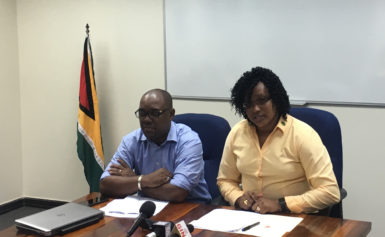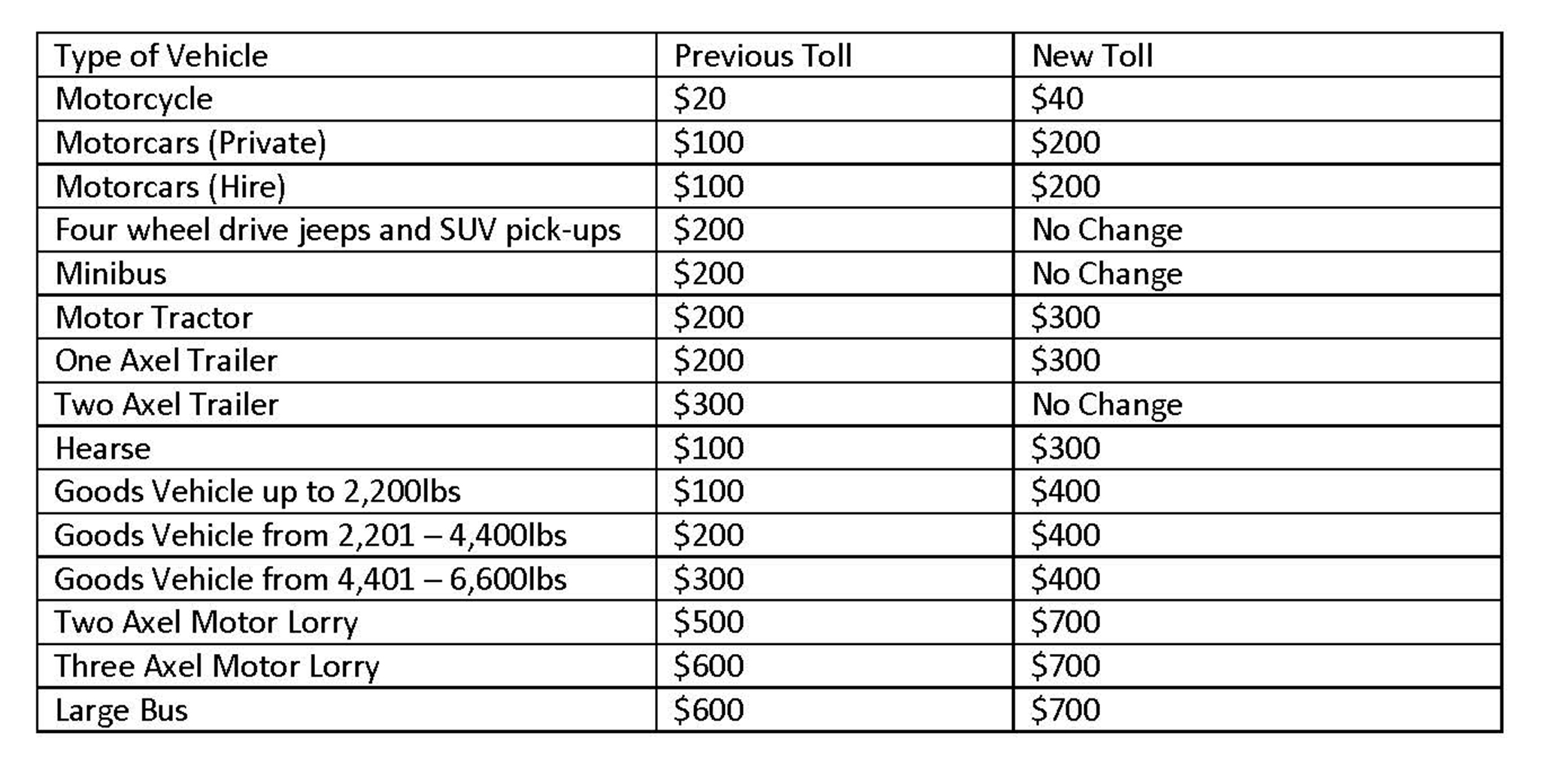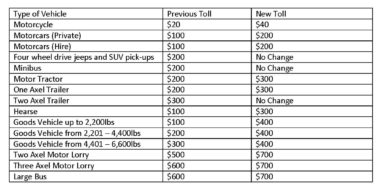With higher tolls for the Demerara Harbour Bridge (DHB) starting in January, Minister within the Ministry of Public Infrastructure (MPI), Annette Ferguson says the facility is expected to rake in an additional $300M by the end of 2017.
Speaking yesterday at a press conference at MPI, Ferguson pointed out that there has been a big increase in traffic on the bridge over the years that has seen the maintenance and other costs grow for the DHB Corporation.
She said that based on the current traffic trends, it is projected that the corporation will make $550M at the end of 2016 with the present toll structure while its expenditure, both current and capital, stands at a projected $600M. However, with the new toll structure, the company projects that by the end of 2017, it would gather $861M.
“Over the years the traffic on the Demerara Harbour Bridge has significantly increased particularly among certain types of vehicles such as private cars, minibuses and motor lorries,” she said, stressing the importance of the bridge in linking the East Bank of Demerara with the West Bank and West Coast of Demerara.

She pointed out that in January 2009 there were approximately 74,000 trips made by private cars as compared to the figure of 86,338 in January 2010. The numbers have risen even further as 163,000 trips were recorded up to August this year.
For minibuses, she said, there were 39,000 trips recorded in January 2010 which increased to 44,000 in July of this year. Two-axel motor lorries also saw an increase as 10,000 trips were recorded in January 2010, which rose to 12,000 in the four years.
“Outside of these vehicle types there has generally been an increase in the bridge traffic which means an increase in congestion, increased damage and wear and tear and ultimately increased expenditure to conduct repair works,” Ferguson said, highlighting that from 2008 to 2016 the corporation saw an average income of $489M each year. However, for the same period it has expended an average of $910M each year covering both current and capital expenditure.
“Without the annual subventions (from government) Demerara Harbour Bridge would be operating at a drastic shortfall and would be unable to sustain its capital expenditure for projects and this is where the toll increases come in,” she added. The new toll structure that will be in effect from January 1, 2017 is as follows:
“It must be noted that there were no increase for tolls for minibuses since more often than not the pressure is transferred to the members of the public when bus operators experience any increase in expenditure,” Ferguson reasoned.
One of the steeper increases is the 300% hike in tolls for goods vehicles up to 2,200 lbs from $100 to $400.
She said that the increase in tolls is important because the company would have more funds to dedicate towards its operations and the need for government subventions would be negated. “In other words the corporation would be self-reliant.
Some persons might question why the corporation should not receive government subvention, after all it is the taxpayer monies and the Demerara Harbour Bridge provides a service to the taxpayers however we must consider that not every taxpayer is a user of the bridge. It is necessary therefore to transfer this responsibility from the government and to allow our taxpayers money to go towards other sectors such as education and health,” Ferguson said, while stating that since more persons are now able to afford vehicles it is necessary that the toll structure reflects the development that is seen in the society today.
General Manager of the company Rawlston Adams also stressed the importance of there being additional revenue. He said that the operational costs have been increasing over the years. “With respect to doing repair works we try to do them on weekends and nights and that sends up the cost because of overtime,” he said.
He also explained that in order to ease congestion they have also added night retractions which increases the operational cost. “Yes we are getting increased volumes but with increased volumes comes increased maintenance,” he added.
The increased harbour bridge tolls have come around the same time that the 2017 budget unveiled sweeping changes to the tax regime will likely see a higher VAT burden on consumers. Some consumers also face a 14% VAT on water and electricity bills.







